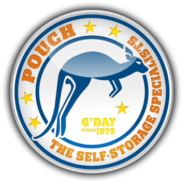-
Eco-Friendly Storage Solutions
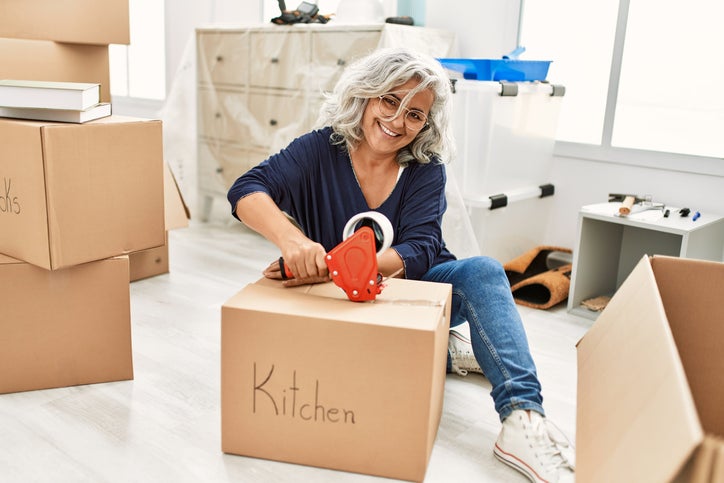
With an increase in global awareness of conservation and environmental issues, many people are beginning to change the way they approach everyday life. The mantra “Think globally, act locally” has caused people in all walks of life to consider how personal choices about their homes, communities, and cities can start to have a broader impact on the health of the entire planet. Simple acts of conservation might include walking or biking somewhere rather than driving a car, recycling household waste, or being aware to use faucets and lights sparingly and only when necessary.
Environmental conservation can also apply to how we store our extra goods and equipment, the things that we don’t necessarily need to use every day. Extraneous belongings like these can often best be suited to a closet, attic, or self-storage unit, and how you store your belongings can be just as impactful as where they are stored. Being aware of the different types of storage solutions available can help you find an eco-friendly way to protect and store your extraneous belongings. Common household and self-storage solutions often involve cardboard boxes or plastic tubs but each of these options has downsides for the environment.
What’s Wrong with Cardboard and Plastic?
Whereas storing items inside cardboard and plastic may be a cost-effective option, they each pose environmental concerns. Both materials are commonly used in home storage as well as self-storage but may not be the best choices if you’re also thinking globally.
Plastics
Plastic pollution is a multi-faceted environmental issue with far-reaching consequences.
- Plastic is non-biodegradable and can persist in the environment for hundreds or even thousands of years. This longevity contributes to the accumulation of plastic waste in landfills, oceans, and natural habitats.
- As plastic breaks down, it forms tiny particles called microplastics, which can be ingested by marine life, birds, and even humans. Microplastics can accumulate in the food chain, causing potential health problems.
- Plastic pollution poses a severe threat to wildlife, particularly marine animals. Ingestion of plastic debris can lead to starvation, internal injuries, and death. Entanglement in plastic waste can also cause suffocation, injuries, and restricted movement.
- Plastic production relies on fossil fuels, contributing to resource depletion and greenhouse gas emissions. The extraction and processing of these resources can also cause environmental damage.
- The vast amount of plastic waste generated poses significant challenges for waste management systems. Landfills are filling up, and recycling infrastructure is often inadequate to handle the volume of plastic waste.
Cardboard:
While cardboard is often considered a more environmentally friendly material compared to plastics, it can still have negative environmental impacts if not managed properly. Here are some of the primary ways cardboard can harm the environment:
- Save The Trees: The production of cardboard requires wood pulp, which can contribute to deforestation if not sourced from sustainably managed forests. Deforestation leads to habitat loss, biodiversity decline, and soil erosion.
- Greenhouse Impacts: When cardboard ends up in landfills, it decomposes anaerobically, releasing methane, a potent greenhouse gas that contributes to climate change. Methane is 25 times more potent than carbon dioxide in trapping heat in the atmosphere.
- Production Concerns: The manufacturing process of cardboard involves energy consumption, water usage, and the use of chemicals, which can have environmental impacts.
- Landfill Overload: Although cardboard is recyclable, recycling infrastructure and participation rates vary across regions. Improper disposal of cardboard can lead to landfill accumulation and litter.
Eco-Friendly Storage Alternatives
There are many alternatives to plastic and cardboard that can not only be better for the environment can provide other benefits as well, whether greater security for your items or an added aesthetic touch for your home. Here are some examples:
Rattan Boxes: A rattan box is a versatile storage container made from natural rattan fibers, a type of climbing palm native to Southeast Asia. Rattan is known for being flexible, durable, and lightweight. Rattan boxes are ideal for storing household items, such as blankets, towels, toys, books, or seasonal decorations.
Used Furniture: Upcycling an old bureau or dresser is a great way to conserve while also providing additional storage. A chest of drawers can go in a garage or a storage unit, providing ideal space for clothing, housewares, holiday gear or seasonal apparel.
Glass Jars: Glass jars offer a versatile and sustainable storage solution for a wide variety of items, providing an airtight, durable, and visually pleasing way to organize and preserve a range of household goods. Use them to hold bathroom essentials, dry goods, and craft supplies.
Wooden Crates: Wooden crates offer a sturdy, rustic, and versatile storage solution for a variety of items, providing a charming and durable way to organize and display household goods. They are best for storing blankets and linens, children’s toys, books and magazines, shoes, and seasonal decorations.
Canvas Bins: Canvas containers provide a breathable, lightweight, and aesthetically pleasing way to organize and store household goods. They’re perfect for clothing and accessories, toys, craft supplies, or outdoor gear and supplies.
Wicker Baskets: Wicker baskets offer a provide a natural and sustainable storage solution for a variety of items. Perks include breathability, durability and style for organizing items like clothes, toys, extra pillows, or blankets.
More Earth-Friendly Tips
Conservation doesn’t only have to do with what you use to store your stuff. Here are some simple steps you can take to contribute to an overall more mindful way of life.
- Dare to Declutter: By simply avoiding the urge to get more stuff, you are already making an eco-friendly decision. Careful consideration of your person and household needs can help you curate a minimalist yet effective set of tools, goods, and housewares. A bespoke approach will make sure that you refrain from contributing the landfill buildup while also providing you with a more peaceful and healthy home life.
- Digitize Your Docs: You can help reduce deforestation while also reclaiming extra space around the house and office by implementing a digital approach to documents. Rather than using the printer and file folders for your documents, archiving them digitally can help make sure your files are secure, accessible, and not adding to your storage clutter.
- Repurpose Extra Items: Making storage use out of things you already own can be a great way to eliminate clutter while also being environmentally friendly. For example, shoe boxes can be used to hold office supplies. Old jars can be cleaned and used to store small hardware like screws and bolts. Let your imagination help you find unique upcycling opportunities in your own home.
- Sustainable Kitchen Storage: Reusable silicone food bags can be a great alternative to single-use Ziplock style food bags. Airtight glass containers and reusable beeswax wraps can also help you reduce single-use plastics.
Embracing eco-friendly storage solutions is not just a matter of environmental responsibility but also a testament to our commitment to a sustainable future. By incorporating sustainable practices into our storage choices, we can collectively reduce waste, conserve resources, and foster a harmonious relationship with our planet. Pouch can help you with offsite self-storage needs. Get in touch with us today to learn about how we can assist you.
-
What You Need to Know About Storing Toiletries
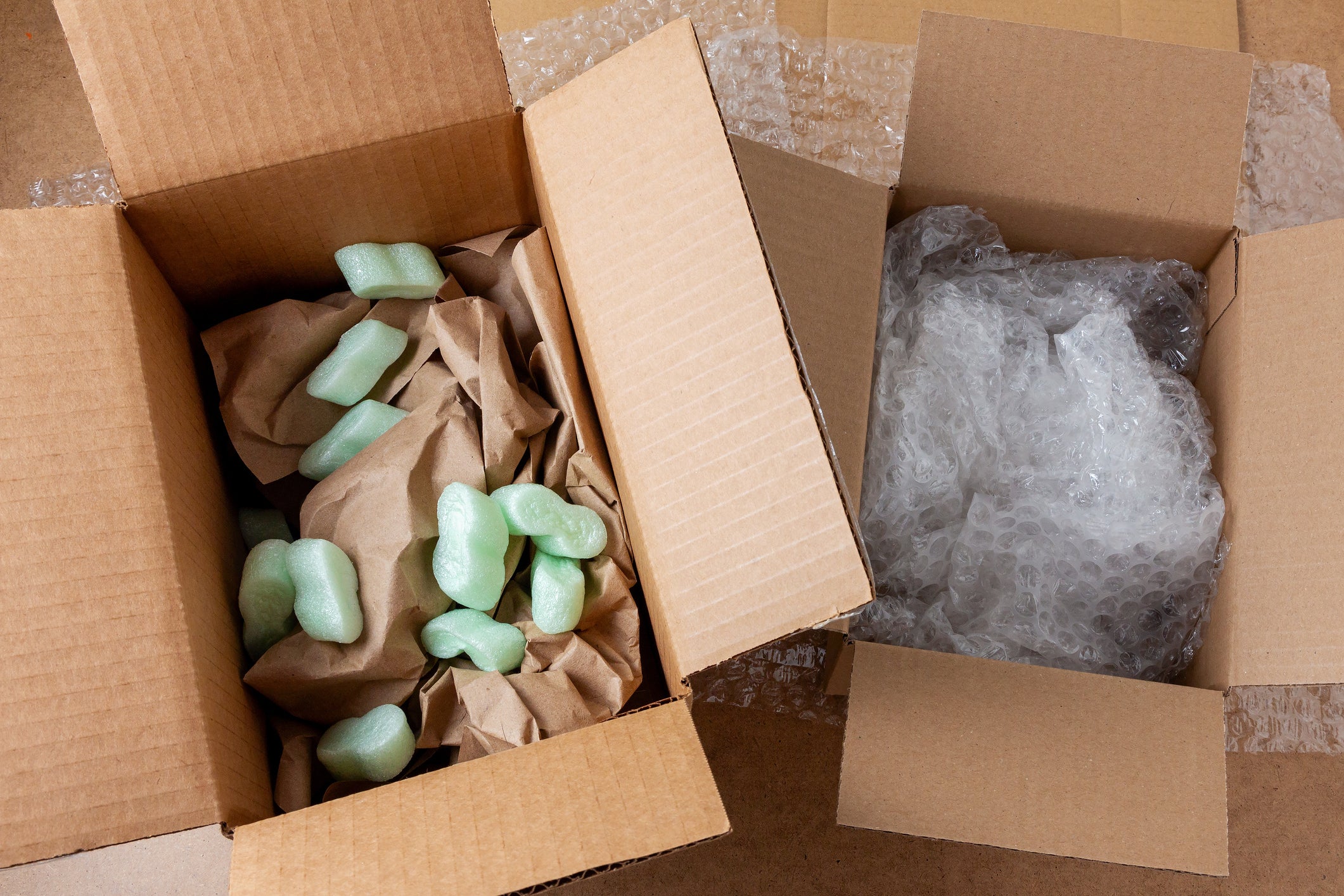
Storing toiletries can be a tough task, especially when you have limited space. It’s important to know what types of toiletries you have and how to store them properly to keep them safe and easily accessible. As a customer of Pouch Self Storage, you want to ensure that your toiletries are in good condition and accessible whenever you need them. In this blog post, we will discuss some of the best ways to store your toiletries for maximum space utilization and easy access.
Create a Toiletries Inventory List
The first step in storing toiletries is to create a list of all the items you have. This will help you get rid of anything that is expired or unused and make storage more manageable. By creating an inventory list, you can also determine which type of storage units you will need. If you have a lot of bulky items, you’ll likely need a larger unit. If you only have a few small items, a smaller unit may suffice.
Use Suction Cups and Shelf Dividers
Suction cups and shelf dividers are excellent organizers for bathroom toiletries. Suction cups are easy to install, don’t require drilling holes, and are great for holding small toiletries like toothbrushes, razors, and makeup brushes. On the other hand, shelf dividers are perfect for storing larger items like shampoos and conditioners. They help you keep your bathroom necessities within reach and upright, thereby reducing the chances of spilling.
Store Toiletries in Clear Containers
The advantage of clear containers is that they help you see what’s inside, look nice, and fit well with any decor style. You can use glass, acrylic, or plastic clear containers, but be sure that they’re airtight or have a secure lid that will prevent moisture from damaging your toiletries. Clear containers also make it easier to spot expiry dates and replace your products accordingly.
Label Everything
When you have multiple storage containers, labeling them is essential for easy access. You don’t want to waste time looking through every container to find what you need. Put labels on your storage bins, shelves, and baskets with specific items. For example, you could label a container ‘Hair Products’ with hair spray, gel, and serum, or ‘First Aid’ for band-aids and medicine.
Use the Back of the Door
If you’re short on space in your bathroom, using the back of the door can be a lifesaver. You can install an over-the-door storage rack for towels, washcloths, and robes. Door-mounted organizers are also great for keeping your toiletries within reach when you’re showering, shaving, or applying makeup. You can also install hooks or a rod to hang bathrobes or towels.
Visit Pouch Self Storage Today for All Your Storage Needs!
Storing toiletries is all about organization and getting creative with the space you have. If you’re dealing with clutter in your California home or business, we’re here to lend a hand. Our storage facilities are state-of-the-art and gated, perfect for all storage needs. No matter the size or duration, Pouch Self Storage has you covered. Please don’t hesitate to reach out if you need assistance or have any questions.
-
How to Choose the Right Storage Boxes for You
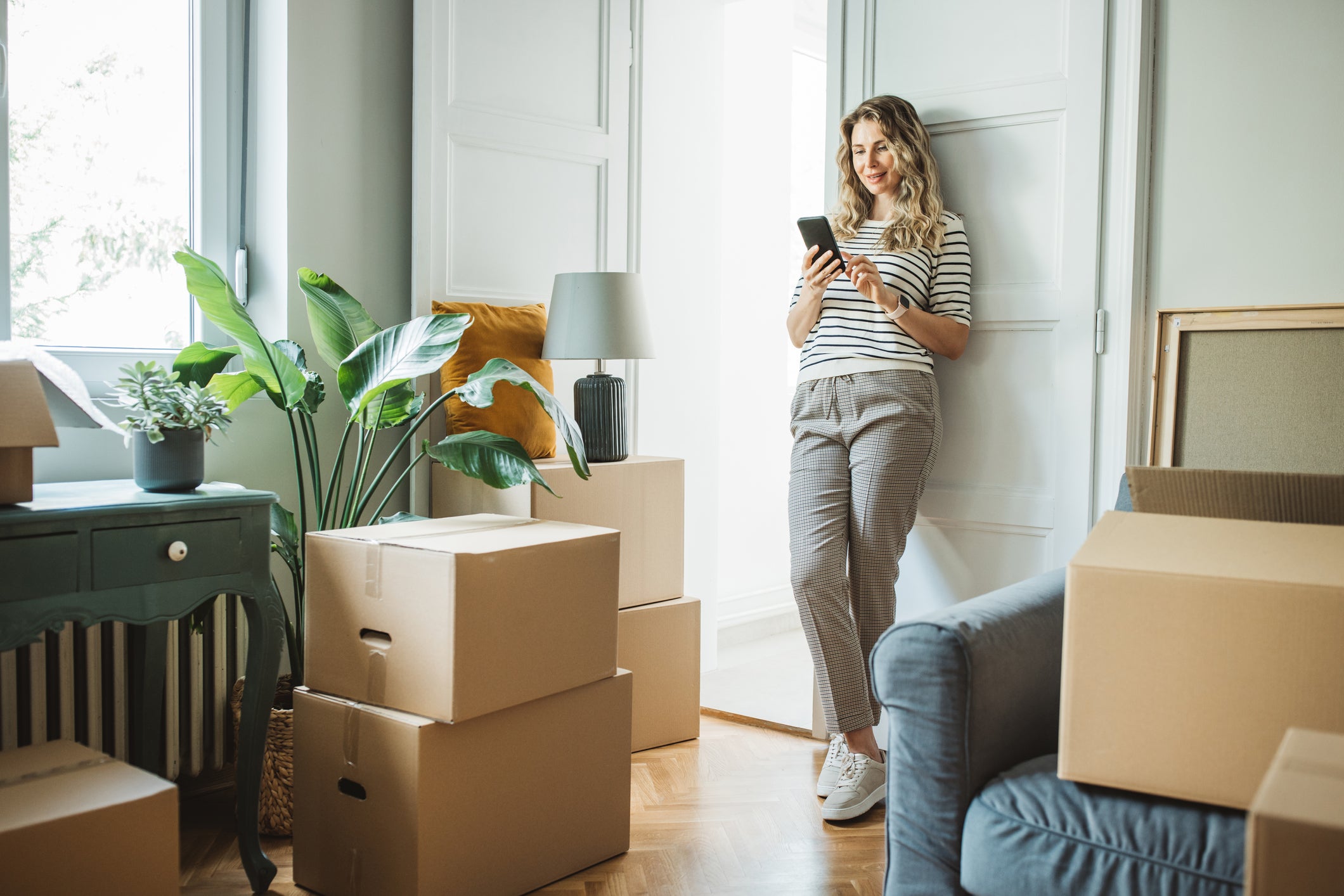
When you’re packing your things in storage, you’ll want to pack them carefully. This means choosing the right storage unit and using the right packing materials, but what about the boxes? Does the type of box really matter? It does, and the type of box you choose will depend largely on what you intend to store in it. Let’s take a look at different types of storage boxes and how they are best used.
- Cardboard is useful but not the best option for long-term storage. Cardboard boxes are often the go-to for packing, and certainly for moving, and with good reason. They’re lightweight, inexpensive, easy to label, stackable, and they can be easily reused or recycled. However, if you’re going to be storing your items for an extended period of time, cardboard may not be your best option. Cardboard boxes are easily damaged, attract vermin, and will quickly allow mold and mildew growth if they get wet. If you are storing items for several months and your unit is not climate controlled, steer clear of carboard boxes.
- Plastic boxes are perfect for storage. Easily stackable, impervious to water, and nearly indestructible, plastic bins are the perfect option for storing things safely. They don’t require packing tape, because they are self-sealing, and they’ll last a long time. However, they are much more expensive than cardboard, so if you are only storing things for a short time, they may not be worth the expense.
- Some items require specialty boxes. If you are storing something like dishes, art, or electronics, it’s worth finding specialty boxes designed to hold these items. Typically, these boxes will have inserts that keep things from shifting in transit and make them easier to pack. While they can be more expensive than traditional boxes, they give you the peace of mind that comes from knowing your items are safe and secure.
- It’s important to choose the right sized boxes. Small boxes are good for small, heavy things like books, because you don’t want a large box to contain too much weight. You can also pack fragile things like dishes in small boxes, to help keep them protected. Medium boxes are good for larger items that don’t need to be tightly packed, like clothing, toys, or cookware. Large boxes can be filled with lightweight things like linens and blankets, and extra large boxes can hold things that don’t fit in smaller boxes, like comforters, coats, and larger kitchen appliances. Try to keep small boxes under 50 pounds, medium and large under 65, and extra large under 70 pounds, so that they will not be too cumbersome to move. Wardrobe boxes are handy for storing hanging items, and you can use the bottom for things like shoes and purses.
No matter what type of boxes you choose, there are a few good practices to remember. First, choose high-quality boxes so that they will be less likely to allow your items to be damaged. Label everything clearly so that you know exactly what’s inside, and stack your boxes with the heavier things on the bottom. When you pack a box, be sure to fill in gaps between items with packing materials, and when you stack your boxes, do the same thing. This way, the items inside the boxes are less likely to shift and sustain damage, and the boxes themselves are also less likely to shift.
Choosing the right boxes is important, and so is choosing the right storage facility. When you’re seeking a place to store your things in Southern California, you owe it to yourself to check out Pouch Self Storage. We’ve been operating mini-storage facilities since 1979 and we’re committed to keeping our clients’ belongings safe. Founded by John Yelland, who hails from Australia, Pouch Self Storage is named in honor of the kangaroo’s pouch- nature’s safe and secure storage spot. We’re an industry leader in design, building, and maintenance of self-storage facilities, and we strive to give our occupants the most advanced security systems available. At our nine Southern California facilities, you’ll find state-of-the-art computer monitoring systems that allow our self-storage managers to monitor the opening and closing of every storage unit door, 24 hours a day. For more information, call (800) 378-4598 or contact us through our website.
-
A “Living on the Road” Checklist
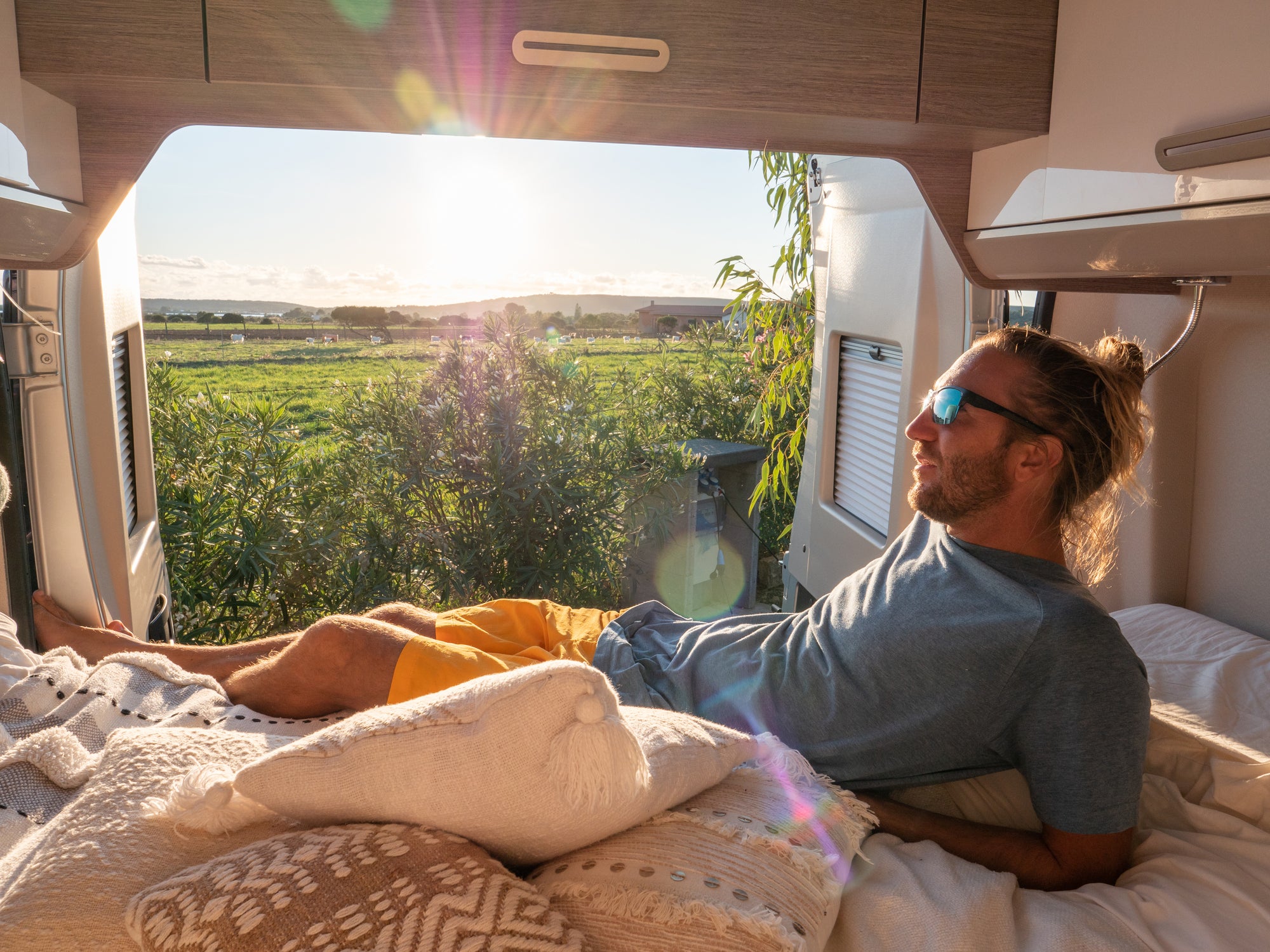
Coming out of the pandemic, many of us are facing a unique and unfamiliar situation. We’ve been in a period of lockdown but have also begun to work remotely. Now that we’re able to move throughout the world more freely, the idea of living on the road seems like an interesting concept. Can you pick up and go, breaking ties with permanent housing in favor of wandering? You might just want to do this for a season, you might want to have an adventure, or you might be considering it as a way of life. No matter how long you intend to do it, the question remains: what will you do with your things?
You might want to give away a lot of your belongings, but there are certainly some things you won’t want to part with. For those items, self-storage is an excellent option. What will you take, and what will you leave behind? Here’s a list of some things you’ll want to bring along on your travels.
- Clothing: No matter what kind of weather you expect, it’s smart to keep a few jackets, hoodies, or sweaters with you in case it gets chilly. You’ll also want to take a bathing suit, because you never know when you might get the opportunity to swim. Beyond that, you really only need a few outfits. Streamline your wardrobe, giving away or selling the things you no longer want to keep, and storing what you love but don’t currently need. Travel light and keep the bulk of your wardrobe readily accessible in your storage unit.
- Medications: Have a plan for managing your prescriptions while you’re away. Take over-the-counter medications with you- in most places it’s illegal to store medication in a storage unit.
- Money: Managing your money is another thing that requires a plan while you’re away. If you don’t already have online banking, now is the time to set it up. Take some cash along with you on the road, but not enough to attract thieves. There’s no reason to store money in a storage unit, but financial records and other important paperwork can safely be stored.
- Electronics: For the most part, you can store your electronics in a self-storage unit. Take care to choose a unit that’s climate control if you’re going to go this route. Of course, there are some electronics you’ll need on the road, especially if you plan to work remotely. Make sure you have enough adaptors and chargers to keep your electronics powered up, and check with your storage provider to determine if there are any limitations on things like batteries.
- Furniture and Linens: It can be tempting, when you’re streamlining your lifestyle, to sell all your furniture. Don’t do it! There will come a time when you’ll need furniture, and you won’t want to have to buy it all again. Give away things you don’t like but store the majority of your pieces. Store much of your bedding and other linens, too, but keep out two of everything so that you can use one and wash one.
- Entertainment: Less is more in this arena, especially if you’re traveling abroad. Digitize your favorite music and carry it with you but leave the television behind in storage. Instead of bringing books, consider an e-reader. Bring a deck of cards, and if you play an instrument that is portable, bring that too. Part of the adventure is being in the moment, so you don’t need a wealth of distractions.
- Miscellaneous Must-haves: This will vary from person to person, but a few items that are good to have include a first aid kit, a blanket, and baby wipes. Bring along plastic bags; they’ll serve a variety of purposes. If you’re taking a vehicle, bring spares and tools in case of emergency, and pop a shovel into your trunk. Of course, in the current environment it’s a good idea to bring along hand sanitizer and masks, as well.
Now that you know what you’ll need out on the road, turn to Pouch Self Storage to store the rest of your things. We’ve been operating mini-storage facilities since 1979 and we’re committed to keeping our clients’ belongings safe. Founded by John Yelland, who hails from Australia, Pouch Self Storage is named in honor of the kangaroo’s pouch- nature’s safe and secure storage spot. We’re an industry leader in design, building, and maintenance of self-storage facilities, and we strive to give our occupants the most advanced security systems available. At our nine Southern California facilities, you’ll find state-of-the-art computer monitoring systems that allow our self-storage managers to monitor the opening and closing of every storage unit door, 24 hours a day. Currently, we’re abiding by CDC recommendations and implementing social distancing, but you can still reach us by calling (800) 378-4598 or contacting us through our website.
How to Pack Oddly-Shaped Items
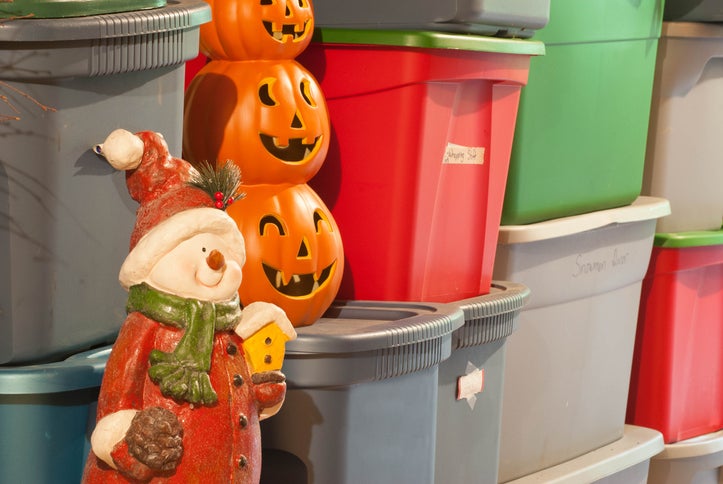
When you think about moving, you probably think of large pieces of furniture and square or rectangular boxes. Boxes are easy to use when you’re packing dishes or books, but what happens when the things you’re packing are oddly-shaped? We’ve got some tips to make packing those less-than-uniformly-shaped objects a breeze.
- First, think through the whole packing process. Make sure you have the right packing materials on hand, including new, sturdy cardboard boxes, strong packing tape, soft packing paper, bubble wrap, foam sheets, and Styrofoam peanuts. It’s also helpful to have things like old towels, sheets, and blankets, to use as padding. Consider where you’ll pack your oddly shaped things. Will they fit in standard boxes or will you need special containers?
- Go overboard with your wrapping. Disassemble things as much as you can, then place cushioning material in hollow spaces and nooks, protect anything that sticks out with bubble wrap, wrap the whole thing in packing paper, bubble wrap, old linens, or foam sheeting, and tape it all together with packing tape.
- Don’t be afraid to waste space in the interest of protecting your treasures. Once you’ve got your specially shaped item wrapped, it’s time to pack it. If it can fit in a box, that’s the best place for it, even if the only box it fits in leaves a lot of extra space around it. That’s fine, just add extra padding into the excess space, after carefully padding the bottom of the box. Make sure the item is completely immobile, and put an additional protective layer of bubble wrap on top before you close the box.
- Create custom boxes when necessary. If you’ve hired professional movers, they’ll often offer custom crating services. If you’re doing it yourself, though, you might have to use some ingenuity to find the right fit.
- If you need an extra-tall box, you can put your item in a tall, sturdy box about half its height, raise the lid flaps of the carton and tape them so that you create an open-topped box. Then put another, similarly-sized box over the top of the item, sliding it down over the bottom carton as far as possible and sealing the two boxes together.
- For an extra-wide box, use a large, rectangular box, with the top taped up. Cut along one of the long sides, removing the cut piece to make an open-sided box. After putting your odd-shaped item into the box, get another box of the same size, tape it shut, cut along a long edge and both shorter edges, creating a flap that can open and close. Sliding the second box over the first will create a wide, sturdy packing container.
- You can also build a box around your item. Flatten a large cardboard box, put the item on top of it, fold the edges of the cardboard around the item, flatten a second box, put it over the item, fold the boxes together and seal.
- In some cases, cardboard won’t cut it. For oddly-shaped items that are particularly delicate, it’s better to use custom-built wooden crates.
- If you’re going to store your items, pay special attention to packing and labeling. You need to be absolutely sure that if your things are stacked in a storage facility, your oddly shaped items will still be protected. Label them clearly with words like “fragile”, “this side up”, and “do not stack” if necessary.
Pouch Self Storage has been operating mini-storage facilities since 1979 and is committed to keeping our clients’ belongings safe. Founded by John Yelland, who hails from Australia, Pouch Self Storage is named in honor of the kangaroo’s pouch- nature’s safe and secure storage spot. We’re an industry leader in design, building, and maintenance of self-storage facilities, and we strive to give our occupants the most advanced security systems available. At our nine Southern California facilities, you’ll find state-of-the-art computer monitoring systems that allow our self-storage managers to monitor the opening and closing of every storage unit door, 24 hours a day. Currently, we’re abiding by CDC recommendations and implementing social distancing, but you can still reach us by calling (800) 378-4598 or contacting us through our website.
Reserve Your Free Moving Truck Today!
Renting a storage unit from POUCH means you’ll get a great price on a secure self-storage space that is just right for your needs. Did you know it also means you can move your items with a free moving truck? Our We Move You FREE program makes moving into your storage unit as easy and affordable as possible.
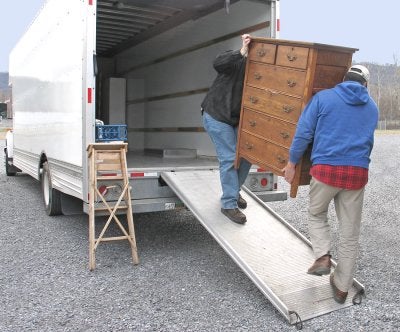 To reserve a free moving truck, you must have a confirmed reservation for a new storage space. Simply contact your storage facility to set up a date and time for the truck. We provide the truck, driver, and gas free of charge. The driver is not allowed to assist you in moving your items, but the truck comes equipped with an appliance dolly and 10 moving pads at no extra cost.
To reserve a free moving truck, you must have a confirmed reservation for a new storage space. Simply contact your storage facility to set up a date and time for the truck. We provide the truck, driver, and gas free of charge. The driver is not allowed to assist you in moving your items, but the truck comes equipped with an appliance dolly and 10 moving pads at no extra cost.
Free moving trucks are available within a 15-mile radius of your POUCH Self-Storage facility. To reserve a truck or learn more about storage units in Lake Forest, call (800) 378-4598.
Getting Ready to Sublet Your Apartment
There are lots of great reasons to sublet your apartment, from covering your rent when you’re going to be traveling for a few months to moving to a new place without breaking your current lease. There are plenty of things to consider when you sublet your apartment, including what items you need to move to a storage unit before the new tenant moves in. Keep these things in mind as you prepare for your sublet.
Check with Your Landlord
Many people who sublet their apartments try to do it without getting an OK from their landlords. This risky game could be very costly in the end. Some leases prohibit subletting completely, while others require sublet tenants to go through a credit check. It’s a good idea to work with your landlord during subletting, so you don’t open yourself up to expensive fines for violating your lease agreement.
 Pack Up Your Valuables
Pack Up Your Valuables
When you’re going to have a tenant in your home, it’s a good idea to make sure that your valuables move out with you. Although you should of course remove valuable jewelry and expensive electronics, but don’t overlook items that are simply valuable to you. If you have a set of glasses or some pots and pans you do not want to risk getting damaged or removed, pack them up. Fortunately, you don’t have to cart your good stuff around. A secure storage unit will keep your items safe until you need them again.
Set Up Clear Lines of Communication
When you sublet your apartment, you’re still ultimately responsible for what happens there. Prevent communication breakdowns from occurring by setting a schedule for how and when you want to check in with the new tenant. You may want to do weekly calls, ask for a monthly email on a certain date, or request to stop by at period intervals to check the place out. Keeping the lines of communication open will help to make your sublet a success.
POUCH Self Storage can help you get you get your items out of your home before your sublet with our self-storage units , available in a range of sizes. Find out how to rent a storage unit in Lake Forest by calling (800) 378-4598.
All About Moving Boxes
When you’re moving, boxes can either make the process easier or add to the stress of the experience. Whether you’re moving into a new home or transferring items into a storage unit, the quality of the boxes you use matters. Watch this video to learn more.
Forget getting waterlogged, flimsy boxes from the grocery store. It is worth it to invest in some sturdy boxes in a variety of sizes that won’t break on you as you transfer them into a moving truck.
POUCH Self Storage is pleased to offer free use of a moving truck with our storage units and records management services. For more information about renting self storage in Lake Forest or using one of our free moving trucks, please call (800) 378-4598.
Keeping Your Stored Sofa Looking Like New
Sofas are common items in self-storage units , but keeping them in good condition takes a little bit of preparation. If you plan to put a sofa into storage, follow these tips to ensure it stays looking like new until you’re ready to use it again.

Clean Before Storing
It’s always a good idea to clean your sofa before putting it into storage, even if you don’t see any signs of stains or dirt. Sofas take a lot of abuse, so putting it away without cleaning means you’ll be locking in sweat, germs, and odors. The right method of cleaning your sofa depends on its upholstery materials. Generally, synthetic fabrics can be cleaned with water, while natural fabrics require a solvent-based cleaner. Leather sofas can be cleaned with a few drops of olive oil massaged into the leather using a microfiber cloth. Ensure your sofa is thoroughly dried before moving it to your storage unit.
Choose Climate-Controlled Storage
Climate-controlled storage facilities will reduce the impact of temperature extremes, moisture, and humidity on the wood and upholstery of your sofa. Although climate-controlled units often cost a bit more, they are worth the extra money to protect your investment in your sofa. Be sure to select a unit of adequate size to accommodate your sofa and any protective padding you want to put around it—you shouldn’t have to push the sofa against a wall or the door.
Store the Sofa Off the Ground
One of the easiest and most effective ways you can protect your sofa in storage is to put it on pallets to keep it off the ground. This will protect your furniture piece from dirt and moisture. It will also help air circulate freely around your sofa. Cover the sofa with drop cloths or padded cloths, but avoid plastic, which traps air and moisture and encourages mold growth.
POUCH Self Storage offers a range of storage options, including climate-controlled, personal storage units and jumbo storage units, as well as business storage. Find out more about our storage solutions in San Juan Capistrano by calling (800) 378-4598.
How to Move into Your New Home
Whether you are planning a local move or are moving across the country, you will have many factors to consider during your move. As you are getting ready for your move, there are several steps that you can take to reduce your stress during your move. For example, by organizing your belongings and obtaining boxes for moving before you start to pack, you will be well prepared for moving day. For a closer look at some essential moving tips, check out this video from KTNV Channel 13 Las Vegas.
At POUCH Self Storage, we can provide you with a free moving truck for your upcoming move. When you store belongings at our storage facility in Rancho Cucamonga, you will be treated to top quality moving services. To learn more about our current storage offers , call us at (800) 378-4598.
